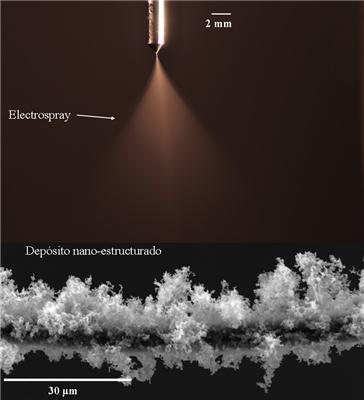A research team from UNED has devised a technique to fabricate a fuel cell component that enables surpassing the target of power set by the US Department of Energy for 2017.
 electrospray
electrospray
The patented technique is compatible with any size of fuel cells from laboratory-scale to commercial-scale, and can be utilized for economical industrial production. Using this technique, the researchers have improved a PEM fuel cell component called Membrane-Electrode Assembly (MEA). The technique involves the deposition of thin nanostructured electrocatalyst particle layers over the fuel cell electrodes, which are connected through a simple contact to each side of the polymeric membrane, thus forming the MEA.
The technique utilized to deposit the catalytic layer (electrospraying) has played a key role in the performance improvement of the PEM fuel cell. Jose Luis Castillo, one of the researchers, stated that the research team was able to manipulate the morphological properties such as roughness and porosity of the material produced by the catalyst particles during deposition, which in turn increased the active surface. The increase in active surface has resulted in improved performance because the fuel cell performance relies on the size of the catalyst surface exposed to the reactive gas.
The deposition technique coated both electrodes with very low platinum loadings of 0.01 mg/cm2, which in turn increased the platinum utilization and enabled the PEM fuel cells to deliver a power as high as 10 kW per gram of platinum. This value is better than the US Department of Energy’s forecast of 8 kW per gram of platinum with a 10-fold higher loading for the period 2017-20. Reducing platinum loading will help reduce the overall cost of the fuel cell as the platinum catalyst represents 30% of the total cost.
Low-cost fuel cells pave the way to use fuel cell-powered electric motors as a substitute for internal combustion engines in automobiles. Low-cost, high-performance fuel cells are simple and economical option over batteries to eliminate discontinuity in the production of renewable electricity. Hitherto, a fuel cell comprising the MEA fabricated by the UNED team has been continuously running for over 1,000 h.